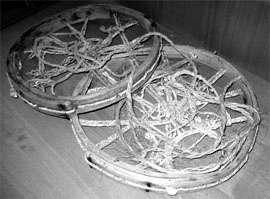and Chamois Hunting
I am in process of updating this page with what I have been working on of late. I need to add new pictures, and fill in new information on crossbows, and some other stuff found while translating parts of Die Geheimes Jagdbuch.
I also plan to include a pdf file of the original Geheimes Jagdbuch, and the parts I have translated.
Mountain climbing and Mountaineering as a sport - to go out and climb a mountain just to climb a mountain became a recreational activity in the late 19th century. Before then if someone went out to climb a mountain it was done for reasons other than just to climb to the top, for personal fitness, or whatever other reasons people climb mountains today. Prior to the 18th century mountain climbing was probably done for surveying and mapping, mineral hunting, and as early as the 16th century - hunting for Chamois, a kind of European Mountain Goat.
I've gleaned information on Chamois hunting and mountain climbing in the 16th century from several sources - The The Adventures of the Knight Theuerdank, The Triumph of Maximilian, and
Die Geheimes Jagdbuch. Theuerdank is an allegorical story written by Emperor Maximilian I about his fancifully heroic alter-ego Theuerdank, and his quests, trials, and tribulations as he travels to meet his future queen, Ehrenreich, the allegorical stand-in for Mary of Burgundy. The Triumph of Maximilian is a series of woodcut prints commissioned by the Emperor to celebrate his various victories in war and politics. Each woodcut shows five people from one of various groups, such as musicians, Landsknecht pikemen, Spanish Rodeleros, bear hunters, boar hunters, chamois hunters, jousters, etc; and included some text to say something about each of the peoples in individual woodcuts. Die Geheimes Jagdbuch, or (The secret Hunting Book) was handwritten by Emperor Maximilian himself, probably for his grandchildren. The Secret Hunting book contains descriptions of different kinds of hunting equipment, information about various imperial hunting grounds, a few hunting stories, and a bit of bragging about himself as "der Große Waidmann" or the Great Huntsman. This Secret Hunting Book is of exceptional interest here since the majority of it's information on hunting equipment is related to hunting Chamois.
Tertiary sources I have found:
~~~~~~~~~~~~~~~~~~~~~~~~~~~~~~~~~~~~~~~~~~~~~~~~~~~~~~~~~~~~~~~~
Clothing:As of the year 2020 I have entirely hand sewn a set of clothing based on what the chamois hunters in The Triumph of Maximilian are wearing. What they wear in Theuerdank is a bit more varied and I hope to recreate some of those extra garments soon. Outfits in Theuerdank fit with the description provided in Maximilian's Secret Hunting Book, which I have translated/interpreted here:
~~~~~~~~~~~~~~~~~~~~~~~~~~~~~~~~~~~~~~~~~~~~~~~~~~~~~~~~~~~~~~~~
Mountain Shaft: The Triumph of Maximilian chamois hunters seem to have poles of ten to twelve feet long with a detachable socketed knife-like head, and spiked steel butt cap. In the full version of the Triumph of Maximilian Chamois Hunters (linked to through the image at the top-left of this page) note that the hunter on the far left has his spear point sheathed with the bi-knives of his large hunting knife, the other hunters all have the tips on their spears and the only other one who provides a clear view of the hunting knife sheath is second from the right, who has an empty sheath where the other hunter with a detached spear point has something which looks very much like the tip of a chamois spear. With the spear point removed the pole could more safely be used for climbing. Maximilian's Secret Hunting Book offers the following description:
~~~~~~~~~~~~~~~~~~~~~~~~~~~~~~~~~~~~~~~~~~~~~~~~~~~~~~~~~~~~~~~~
Chamois Hunting Trousse: This is a hunting knife set specific to chamois hunters, all contained in one sheath as was fashionable during the 1500's in the lands of the Holy Roman Empire. It consists of a large broad knife - a Bauernwehr, pretty much like the bowie knife of it's time; a small carving knife paired with a pricker (an awl or short skewer with a handle to match it's companion knife), and what looks to be a medium length and robustly built knife with it's handle replaced by what appears to be a socket such as a spear head would have for fitting it to the end of a spear. This kit is not shown on any chamois hunters in Theuerdank. The translation from the Secret Hunting Book was not easy, but I worked out the following:
"Tille-Knife, which is provided with a groove
~~~~~~~~~~~~~~~~~~~~~~~~~~~~~~~~~~~~~~~~~~~~~~~~~~~~~~~~~~~~~~~~
Weapons for Hunting Chamois:
From the Secret Hunting Book in regards to crossbows:
"In winter, because of the cold use the horned crossbow;
I have not found reference to the chamois spear in the Secret Hunting Book, but it is alluded to in both the entry for the knife set, and the mountain stick:
"Tille-Knife, which is provided with a groove
And the mountain stick is also discribed above as being able to have "a good strong socketed knife" fitted to one end.
In it's section up above (which seems to be more about mountain climbing than for actual hunting), it is suggested to take a shaft of two lengths, one that is medium and one that is long (9 and 24 feet respectively). Woodcuts from Theuerdank show hunters using their long spears to stab and prod cornered chamois from high ledges where they would fall to their deaths; and shorter spears are sometimes sometimes thrown to kill or dislodge chamois from some 20-40 yards by a skilled hunter (Blackmore, pg. 94).
~~~~~~~~~~~~~~~~~~~~~~~~~~~~~~~~~~~~~~~~~~~~~~~~~~~~~~~~~~~~~~~~
Boots: This is my interpretation of the boots worn by the "Triumph of Maximilian" chamois hunters.
~~~~~~~~~~~~~~~~~~~~~~~~~~~~~~~~~~~~~~~~~~~~~~~~~~~~~~~~~~~~~~~~
Above all, you should have good foot irons,
"You should always take two pairs of chamois irons
"You should use the forest iron for bear hunting.
What the Thuech is "Thuech"? I have been unable to find a meaning for the word Thuech, and now if you do a web search for Thuech then this page is probably at the top of the list. My best guess - it mentions finding Thuech in a stove; the straps for the mountain/forest irons are pretreated with Thuech, so I would guess it is pretreating to waterproof the leather straps... I think this mystery "Thuech" is creosote.
I found these pictures on an auction website, which attributes them to be German and from the 14th or 15th century.
My first design for foot irons:
"Iron hooks, which the hunter fastens on to his
~~~~~~~~~~~~~~~~~~~~~~~~~~~~~~~~~~~~~~~~~~~~~~~~~~~~~~~~~~~~~~~~
Knapsack: The Triumph of Maximilian only mentions the hunters as having havre-sacs and gives a short discription of provisions they carried. So far in translating and interpreting Maximilian's Secret Hunting Book I have found no mention of a bag carried on the back, but tells a bit about provisions and some things that might be carried in the pack - I will get to that later. Looking at the "Triumph of Maximilian" chamois hunters (well, mostly the one on the far left) I first thought that his pack looked like a fairly simple drawstring sack with shoulder straps - but after looking at it a bit more I started to notice some odd things going on with the seams and folds. I think it looks like two smaller sacks that are sewn to the back of a larger one, the tops of all three being bound together at the top. I played around with that idea and came up with a very easy to make design for a four compartment knapsack comprised of three canvas bags. I've made a color coded picture to better illustrate what I see in the original woodcut and how it relates to my own version.
This is what the editors notes in The Triumph of Maximilian say:
Maximilian's Secret Hunting Book also lists some items (some of these may be already mentioned in descriptions of
"You also want to have a good rope."
"You should have a short petticoat with cut
"Two types of gloves; thin close fitting gloves
"You should also have woolen socks carried;
"...take a small green hut with you and a chair to screw
"You should also always have a small chest
So, to sum up the packing list...
~~~~~~~~~~~~~~~~~~~~~~~~~~~~~~~~~~~~~~~~~~~~~~~~~~~~~~~~~~~~~~~~
Chamois Hunting Trousse: This is a hunting knife set, all contained in one sheath as was fashionable in the lands of the Holy Roman Empire. It consists of a large broad knife - a Bauernwehr, pretty much like the bowie knife of it's time; a small carving knife paired with a pricker (an awl or short skewer with a handle to match it's companion knife), and what looks to be a medium length and robustly built knife with it's handle replaced by what appears to be a socket such as a spear head would have for fitting it to the end of a spear. This kit is not shown on any chamois hunters in Theuerdank. The translation from the Secret Hunting Book was not easy, but I worked out the following:
"Tille-Knife, which is provided with a groove
~~~~~~~~~~~~~~~~~~~~~~~~~~~~~~~~~~~~~~~~~~~~~~~~~~~~~~~~~~~~~~~~
Snowshoes: I don't really need these for climbing, but they would be a useful thing to have in the winter, and the Triumph of Maximilian chamois hunters have them. I found no reference to these while working through my translation of Die Geheimes Jagdbuch, they do not appear in Theuerdank, and the Triumph of Maximilian only mentions them as "snow-hoops", with the following description found in the editor's footnotes:
~~~~~~~~~~~~~~~~~~~~~~~~~~~~~~~~~~~~~~~~~~~~~~~~~~~~~~~~~~~~~~~~
Howard L. Blackmore "Hunting Weapons: From the middle ages to the twentieth century"; Dover Publications, Inc; Mineola, New York; copyright 1971.
W A Baillie-Grohman "Sport in the Alps in the Past and Present"; Charles Scribner's Sons; Fifth Avenue, New York; 1896
in place of the handle, so that it can be put
on the shaft. A broad knife and a cutting
knife with an awl."
Two kinds of weapons are mentioned for hunting chamois: The crossbow, and chamois spear.
but otherwise the steel bow. Even in winter, if it is not
freezing, the steel bow may be used."
The "horned" crossbow refers to the composite style of crossbow prod that is made up of many layers of horn laminated together. The steel bow is crossbow with a prod made of spring steel.
in place of the handle, so that it can be put
on the shaft."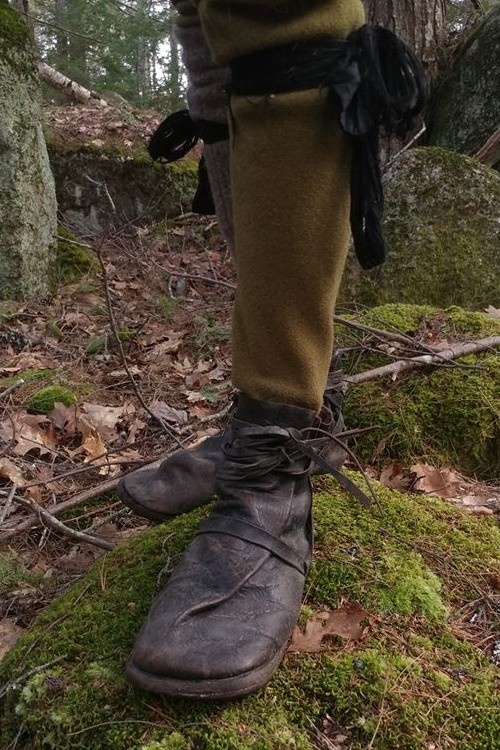
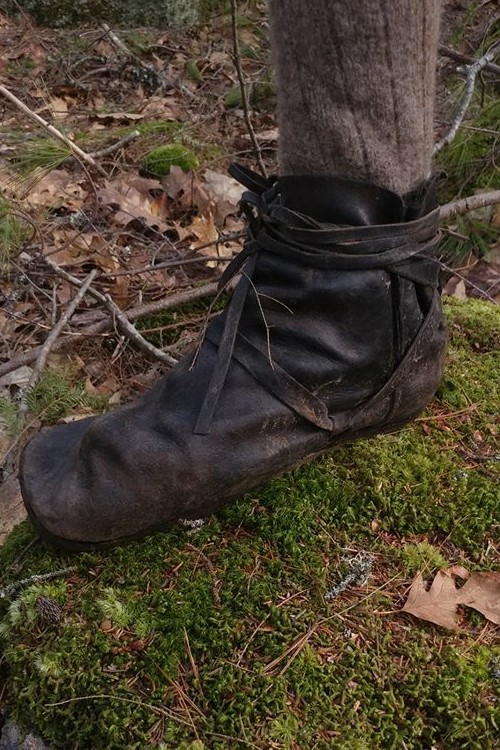
You should always have two pairs of shoes;
plus four lasts when you go up into the
snowy mountains, so when your shoes get
wet, you can knock them over the lasts and
put on the dry ones. The shoes should be
made with edges so that no stones fall into them."
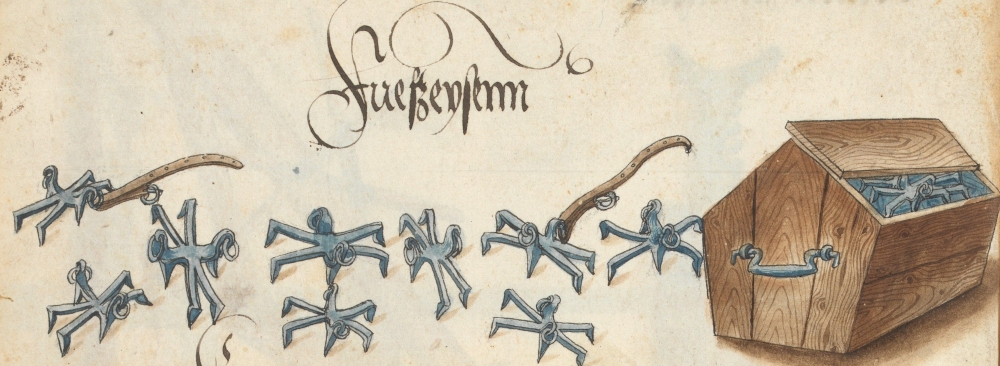
with six thorns, as can be found in the armory
at Innsbruck, and was worn by the imperial majesty.
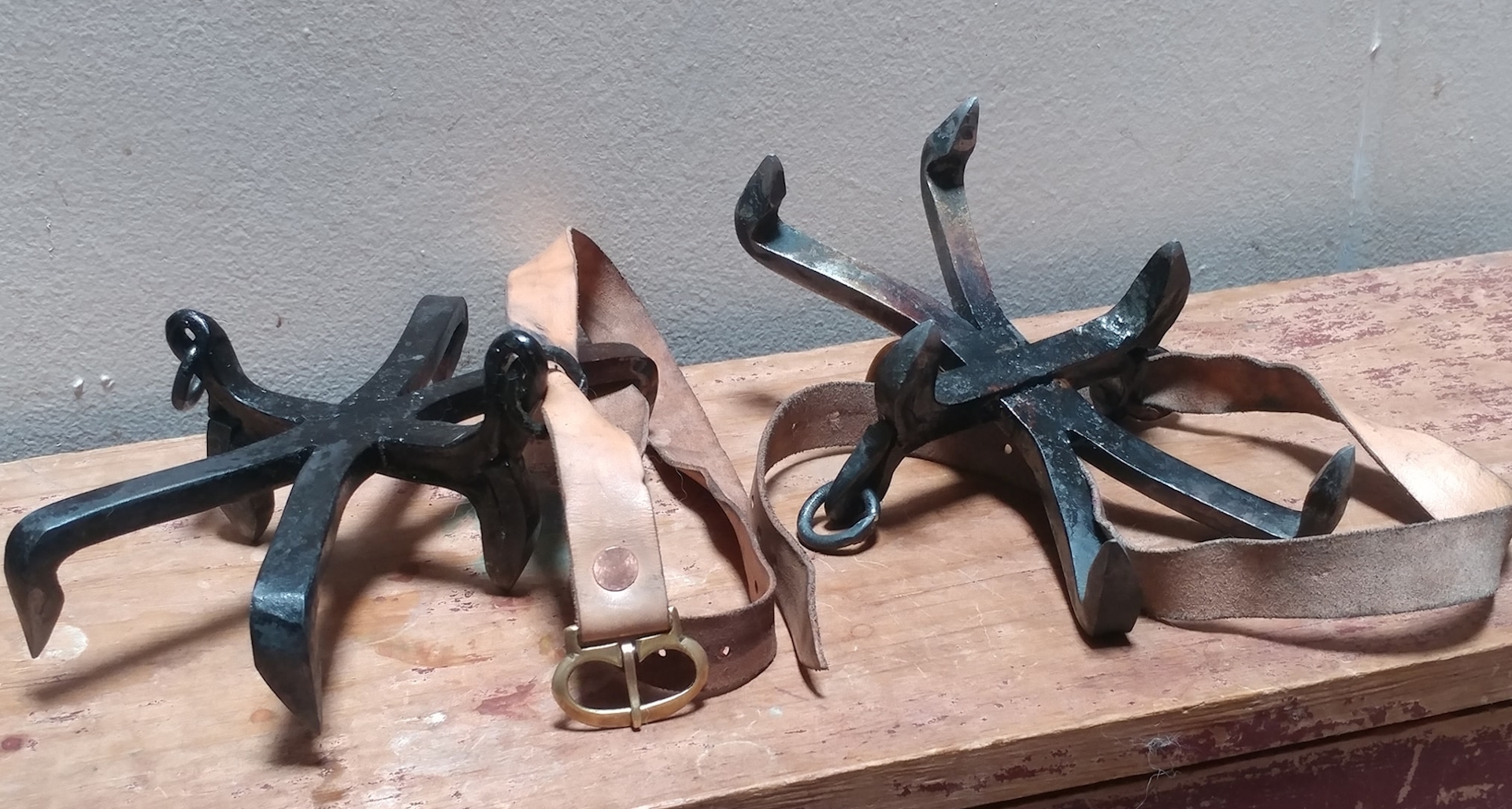
with you. Namely, a pair of mountain irons and a pair
of forest irons. You may take the irons from the
Innsbruck armory. They should also have short hooks
and low spikes so that they don't push you. They
should also be provided with straps so that they sit
firmly on the foot."
These irons have a shape similar to that of horse irons (horse shoe).
The irons have two catches for straps, which pass around the back,
up and down, and over the instep. Above the shoulders
the straps should be wide, pretreated with Thuech as you
will find in the stove, and lined with cloth as you see in the
armory at Innsbruck."
I feel these may be what are called forest irons in Geheimes Jagdbuch. I hope to make a copy of these soon.
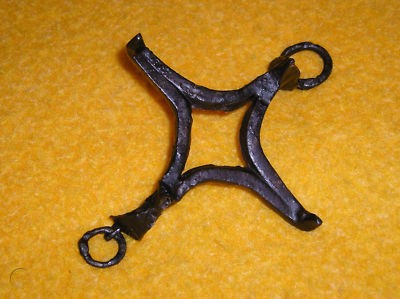
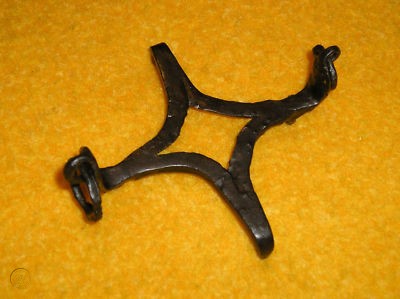
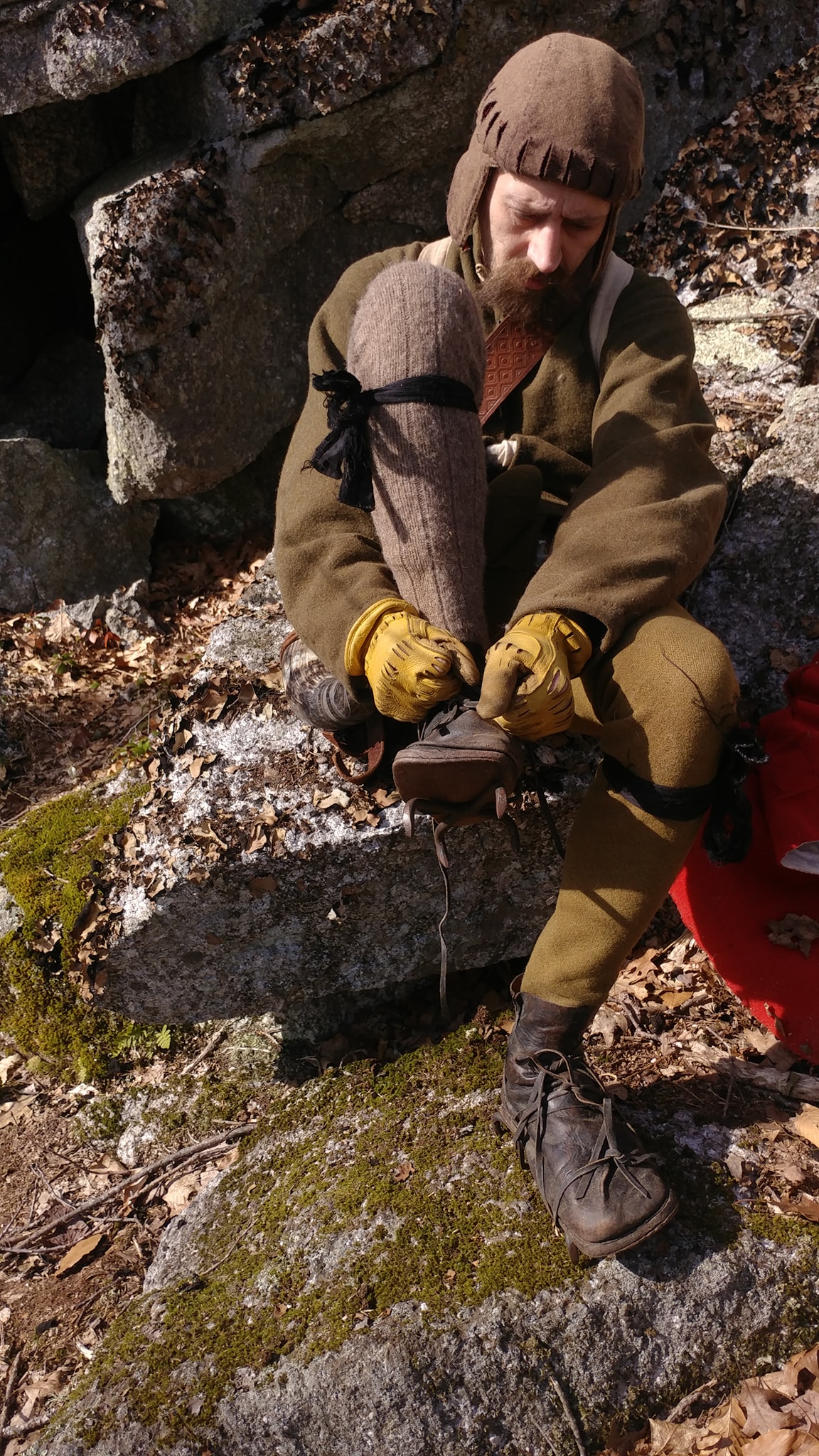
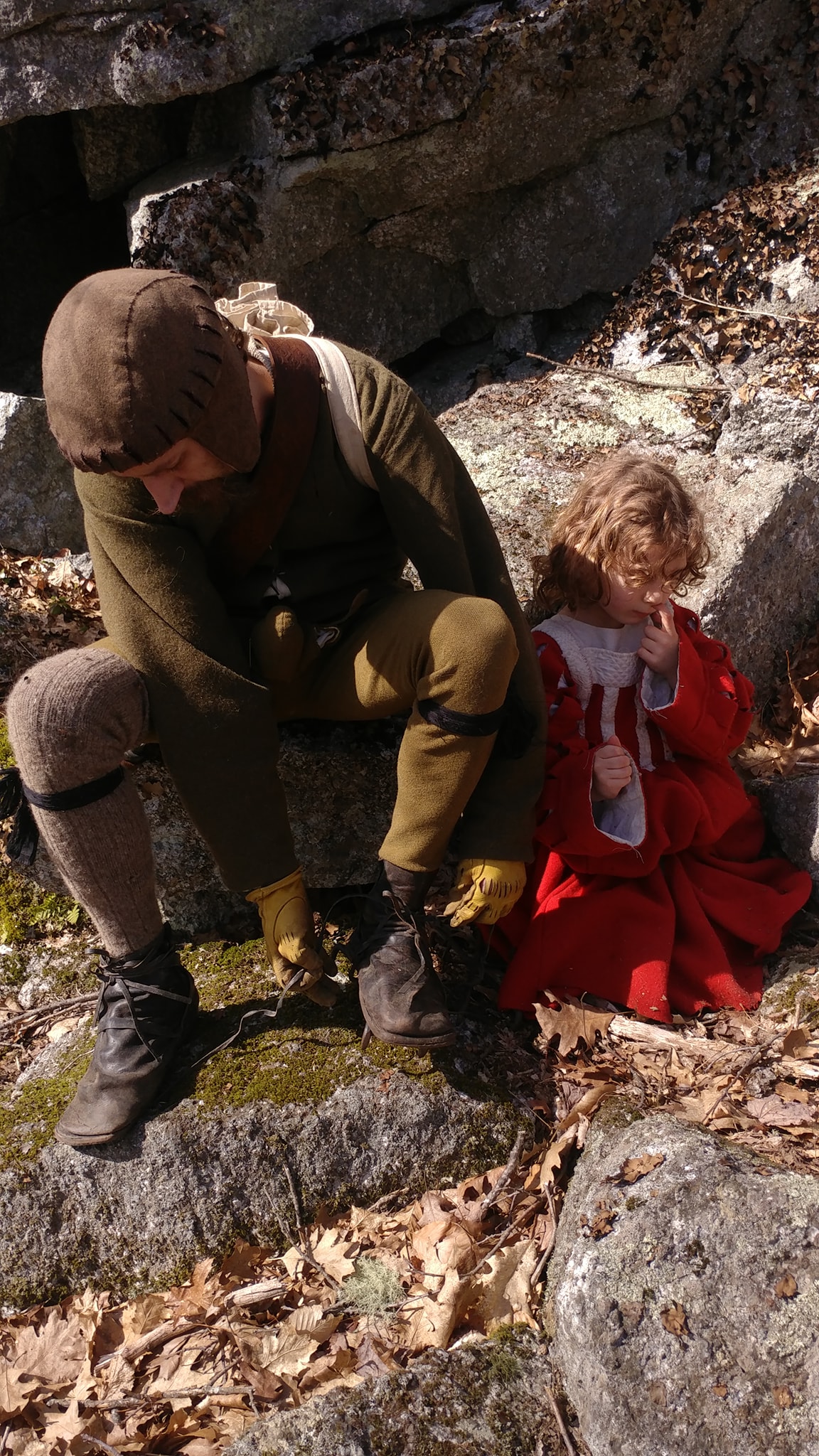
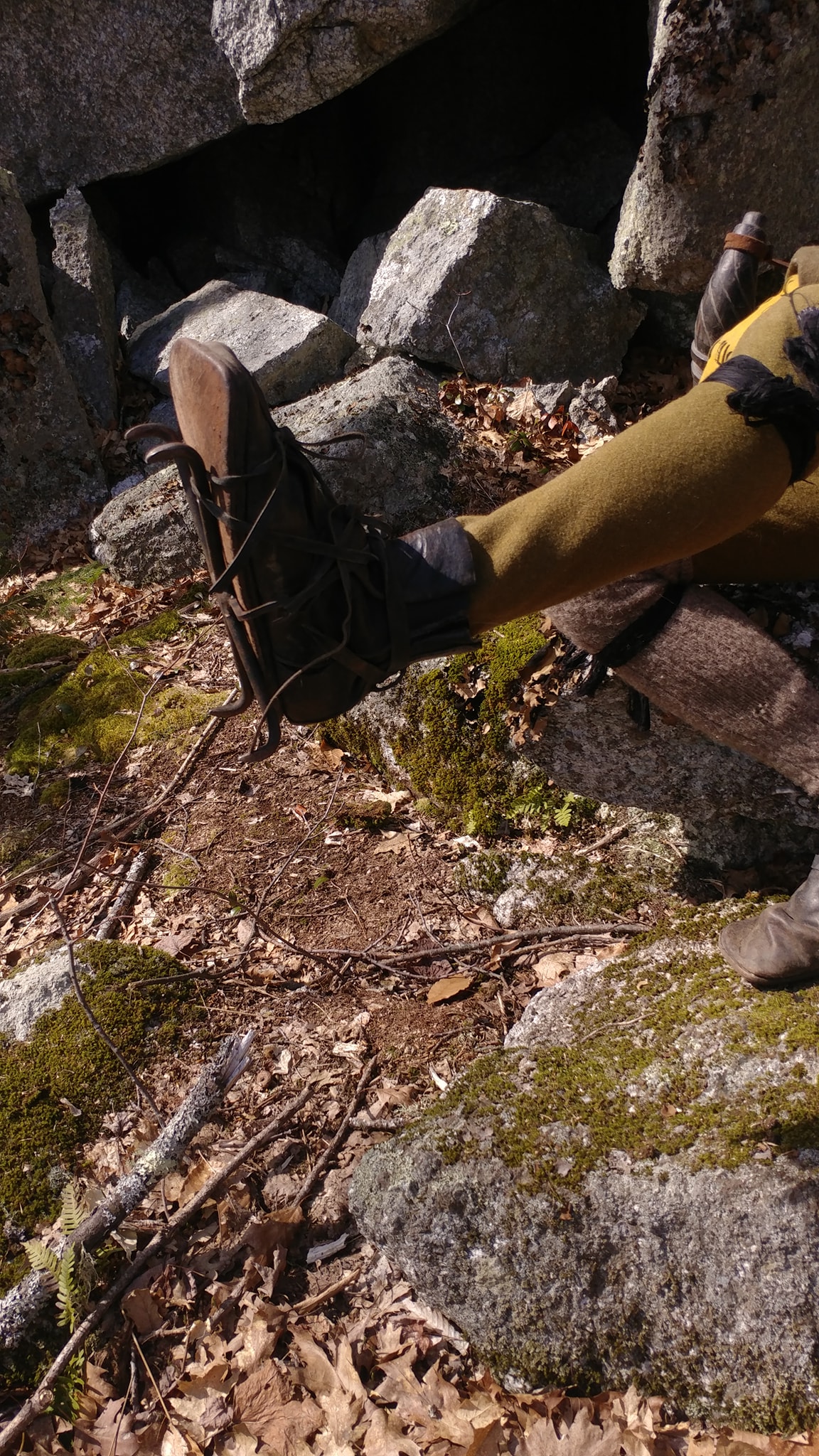
These were my first interpertaion of foot irons based on details from the Triumph of Maximilian and Theuerdank. The Triumph of Maximilian showed just enough detail of their foot irons to give me a basic idea of their shape but only shows them hanging from the hunter's belts. Looking closely at some of the chamois hunters in Theuerdank, I noticed that in some pictures I could see the points of their foot irons under their feet. Most of the foot irons that can been seen in Theuerdank look like they have four points, so I decided to go with that in my first design. I used this design for several years but was never quite happy with it. They came loose easily and needed to be adjusted often, and kind of took a long time to put on and take off... But, having no other leads on further research for these I would have been left to get a little more inventive than I wanted to with trying to make a plausible recreation - so for a while I focused on other projects. More recently, while translating Maximilians "Secret Hunting Book" I found Maximilian's own description of the foot irons - which was cool, but between interpreting writings in an old German book and the familiarity the author assumed readers would have with material culture of the day, I have a very vague description of something with hooks, claws, and straps... but I had sort of an "AH HA!" or "EUREKA!!" moment with Maximilian writing that the foot irons are in the Innsbruck armory, and I remembered that Maximilian had an illustrated catalog of his armory at Innsbruck. I searched and found a complete copy in digital format, and sure enough there is a quite detailed illustration of Maximilian's foot irons.
Here is the description of foot irons from "The Triumph of Maximilian":
soles with leather bands, to prevent his slipping
whilst mounting steep rocks or places slippery
from snow or ice."
"The chamois inhabit only the highest and most desert mountains,
whose summit is bald. The approach is as difficult as it is long, and
the hunters are obliged to take provisions for several days, which
they carry in havresacs, and which are ordinarily composed of bread,
cheese, and a mixture of melted butter and flour"
other stuff on this page, but I'm listing them here as well) that might be carried in this havresac:
"You should always have two pairs of shoes;
plus four lasts when you go up into the
mountains in the snow..."
off sleeves, well made and with a short skirt,
reaching a little over the points."
(so no mittens), with the front of the fingers
cut off, and with small holes... Likewise two
woolen from white cloth."
so that when you get into the snow on the
mountains, you can put on your socks over
your shoes and hosen."
together so you can rest until the shoot comes."
with fried meat, fruit, cheese, bread and good wine
added to it so that you can take a snack either
after the hunt or while you are waiting for the shoot."
An extra pair of shoes and lasts to dry them on. A good rope. A sleeveless gown (this is often but not always shown being worn in Theuerdank, so it might be packed away when it is too warm). An extra pair of gloves. Woolen socks for over your boots while in the snow. The small green hut would probably be something like a canvas tarp to set up a simple shelter. I suspect the screw together chair might be a simple monopod stool. Provisions for several days, consisting of bread, cheese, a butter/flour mix, fried meats, fruit, and good wine.
in place of the handle, so that it can be put
on the shaft. A broad knife and a cutting
knife with an awl."
"We see in the engraving these snow-hoops slung from
the thighs of the hunters. The thin hoop has many bands
of leather interlaced, to form the bottom. The hunter
attaches it below the sole of his shoes, and thus saves
himself from the danger of sinking in snowdrifts."
